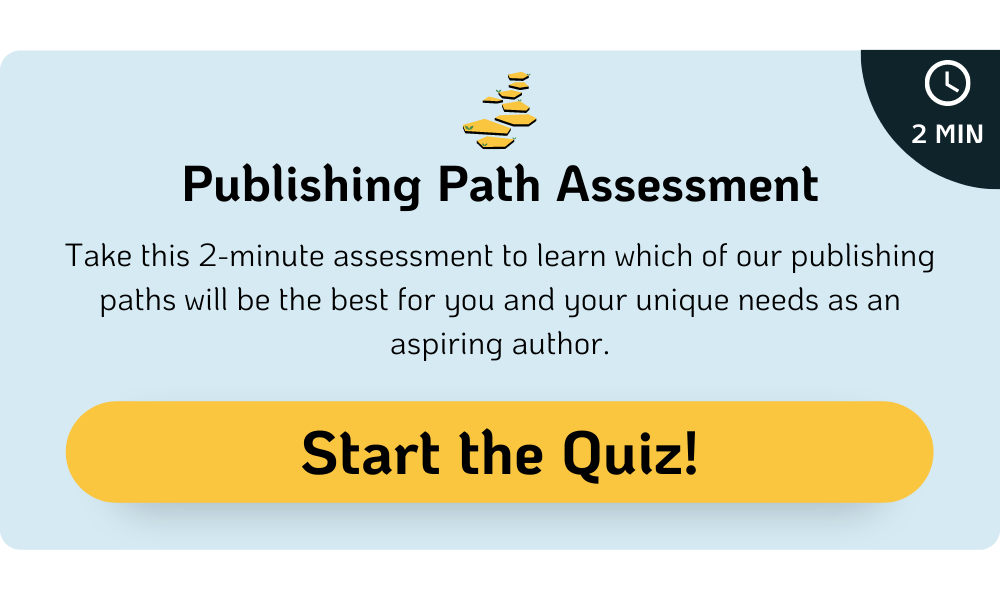Some of the most beloved books of all time are a part of a series. The Chronicles of Narnia, The Hunger Games, Discworld, Lord of the Rings, A Song of Ice and Fire, A Series of Unfortunate Events.
The writers of these stories have created fantastical worlds and characters so endearing you want to follow them through book after book. I’m sure most of your favorites as a kid were series, because series facilitate the space to really develop a relationship between your reader and your characters.
Like any longform writing, book series present their own unique challenge, but they also offer unique benefits, for both reader and writer. Are you ready to write your own series?
Should you write a book series?
Do you have dynamic characters and an interesting world you’d like to explore for more than one book? Do you have a story that just won’t fit into one book, but you can segment it up cleanly into several? Then maybe you should write a book series!
While book series can be incredibly challenging, they also hold tons of potential for building a loyal readership. Think about it–if you’re developing the same world and same characters over several books, people who read the first book are likely to begin another. The more they read, often the more committed they become. The more committed they are, the more friends they will recommend your books to.
Think about a 10-book series versus 10 standalones by the same author. If you read the first book of the series and you love it, you’ll want to read the next one. If you read a standalone and love it, you’re done. There’s nothing else for you here. Series just attract more readers.
Aside from that, readers love following their favorite characters through multiple adventures. Once you’ve connected with a character, you want to know more about them, and you want to see them grow.
If you’re up to the challenge of writing a book series, I have a few tips for you.
How long should a book series be?
As long as you need it to be. Some stories need one book, some stories need a trilogy, and maybe some stories need an interminable serial publication. Which one is best for you?
There are essentially two types of series–closed or continued.
A closed series is when you’ve got a story that just doesn’t fit in one book, so it becomes several books. Think of the closed series like The Hunger Games–three books tell the story of Katniss Everdeen.
A continued series is a collection of episodic stories set in the same universe, likely with the same characters, but each book is a complete story and none of them rely on each other. Think Nancy Drew. Each story is about the same teenage detective, but each plot is a different, standalone mystery.
Some closed series have the potential to become continued serials, like The Chronicles of Narnia. There are only seven books in that series, but CS Lewis could have continued writing stories set in that universe, or even in the different universes we see in Narnia–in The Magician’s Nephew, we learn about The Wood Between The Worlds, which is a wooded area full of countless ponds, each of which could take someone to a different existence. That’s endless story fodder, and the series could still be publishing new stories to this day, had CS Lewis decided to continue it.
But the most important thing to know about the length of a book series is knowing when to tap out. When a story’s run its course, anything you force will seem just like that–forced. It’s often better to quit while it’s still going strong, if you feel you’ve reached the end of the tale.
So how long should a book series be? As long as the story needs.
How to write a book series step-by-step
1. Decide if it’s a closed series or a continuation.
Before you jump into your series, you need to know the format so you can properly plan them out before you start writing.
Example 1
Like we already covered, a closed series is essentially a story that ends within a certain number of books, like The Hunger Games. It’s a three-book series about Katniss, from being destitute in District 12, to battling in the Hunger Games, to where she ends up married with children. We get the whole story in a three-book journey. It would be difficult to capture everything that happens in that series in a single book.
A continuation series is something like Nancy Drew–books about the character interminably solving mysteries with no end in sight. There have been over 500 books published in this series since the 1930s, written by various authors and published under the name Carolyn Keene. With a serial like that, the publisher can release new books forever.
Example 2
Any media series will take one form or the other. Look at TV shows: Crazy Ex-Girlfriend has a four-season arc, and plays out like the Four Acts of a story. Something like CSI or NCIS typically goes on for much longer, the focus of the episodes being more on the plot (a whodunit) that gets wrapped up in that episode, rather than a show like Crazy Ex-Girlfriend that focuses on the characters and their journey.
If you’re aiming for a serial story, the important things for your series will be a likable, pretty middle-of-the-lane character, and an environment that lends itself to those smaller, serial stories. Using Nancy Drew as the example, she’s a teen detective. She’s likable, but standard enough to be relatable to most readers of the genre, and she’s a detective, which gives an endless amount of story ideas–just give her a new mystery to solve. The character doesn’t necessarily change. They might learn a few lessons, sure, but the focus isn’t on character arc.
A closed series is going to follow typically a much more flawed character with complicated emotions and special difficulties, like Katniss Everdeen. For a closed series, you’ll usually want to outline the entire series and know how it ends before you publish the first one. With a continuation series, this is less necessary.
As you can see, there’s a huge difference in how you plan and execute a closed narrative and a serial story, so make that decision first.
2. Craft the meta-narrative.
If your series is “closed,” it requires a metanarrative. The metanarrative is the overarching story. Each book should have a story on its own, then a greater story across the entire series.
Example 1
The Hunger Games series is about the people of a broken society being beaten down until they’ve had enough and rise together.
The first book is about surviving the hunger games. We see the problems, we get to know the characters, and we understand the urgency.
The second book, Catching Fire, is about the rebellion rising because of what they’ve done. We see that people have been ready to rebel for a long time, and now Katniss has sparked the revolt.
Mockingjay brings us to the end of the story. We see one cruel dictatorship fall and another threaten to rise in its place.
The metanarrative works as one piece, but each book tells its own story.
Example 2
My favorite to reference is Crazy Ex-Girlfriend because it’s well-written, and because it’s very intentionally done over a four-season series. Each episode has its own arc, each season has its own arc, and the entire series has its own arc. That’s how books in a closed series should be. Next time you watch your favorite TV show, note how there’s a plot inside of each episode, but they all contribute to the greater metanarrative.
This can be incredibly tricky to manage, but it’s much easier with careful planning and a full-series outline before the first book is published.
3. Outline the series, then outline the books.
The simplest way to deal with the metanarrative issue is by outlining the series as a whole first, then outlining each book with its own mini-arc that contributes to the greater story. Ideally, you want to have the entire series outlined–or at least a plan from getting to the beginning to the end–and an idea of what happens in each book.
4. Create loose ends.
While you do want each book to stand on its own pretty well, creating loose ends is essential.
Example 1
In one of my favorite book series, Bloody Jack by LA Meyer, we follow an orphan girl from where she lived on the streets in London to a ship where she pretended to be a boy to get accepted into the British Navy. The book ends with her being found out and left in a prestigious girls’ school in America. This ends the first book quite well–we saw her adventures on the sea, then those adventures ended.
But Jack’s adventures continue in the next book with the next book about her time at the girls’ school. The greater story of the series is the adventures of Jack, but each book outlines a specific adventure. The first book ends with her exiting the navy, which leaves the reader satisfied that we’ve heard the whole story. But it also ends with her entering the school, which might pique interest into reading the next book to see what happens there. It’s a great balance between satisfaction of the story we’ve been told and curiosity to hear the next one.
Example 2
Another series I’m in the middle of is Truly Devious by Maureen Johnson. This series is very much closed–it’s a mystery story, and each book ends with “to be continued.” This series does NOT work as a standalone, and definitely leaves loose ends. While Bloody Jack could be consumed one book at a time, to get the full narrative of Truly Devious requires you to read the full series.
As you can see, each writer takes their own route to telling stories with a closed series, but they all leave loose ends.
5. Keep track of your story.
Creating a series bible or keeping careful notes and outlines of the overall story as well as individual books will help you avoid plot holes and inconsistencies. It’s wise to keep a quick reference guide on hand while writing, and also to keep a more detailed account of what has happened so far and what you plan to happen next.
Here’s a list of documents you might like to keep on hand while writing your series:
- Character sheets – keep track of your character’s background information, physical description, character arc, and motivation
- Series plot outline – the metanarrative and overall story arc
- Book plot outline – the outline for the current book you’re working on
- Worldbuilding notes – especially if you’re writing a fantasy, sci-fi, or historical series, you’ll want to have world notes. You might even make separate documents for different aspects of your worldbuilding, like the magic system, your research notes, etc.
Most problems that arise while writing a book series can be alleviated through careful planning and keeping a reference guide easily accessible while writing the next installment!
Conclusion
While series can be a big challenge and commitment, the return of consistent content, a loyal following, and quicker production once you get rolling might be worth the initial time investment.
Ready to start your book series?


